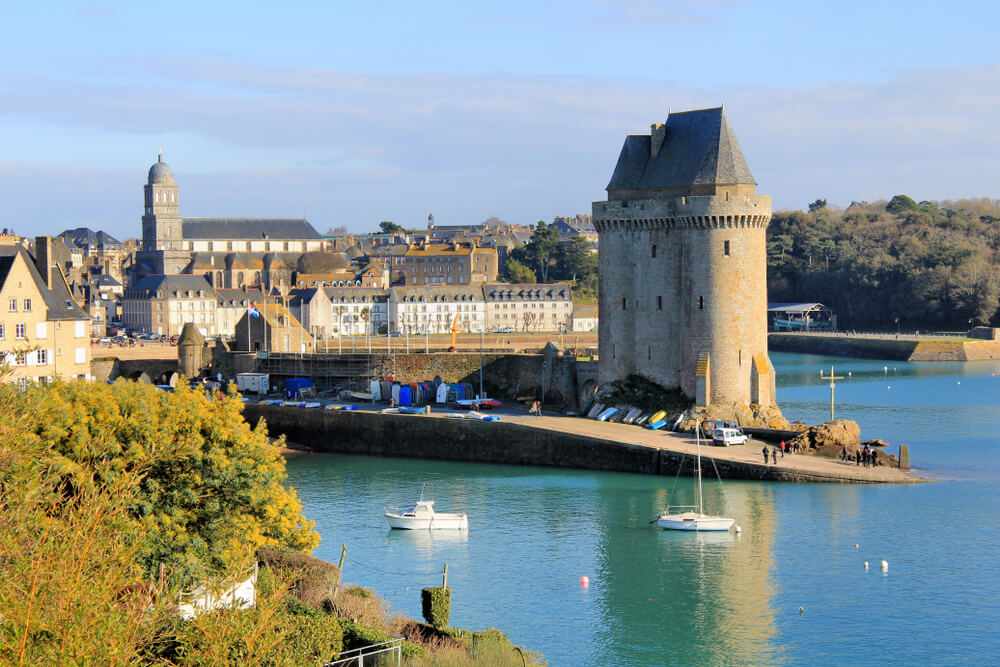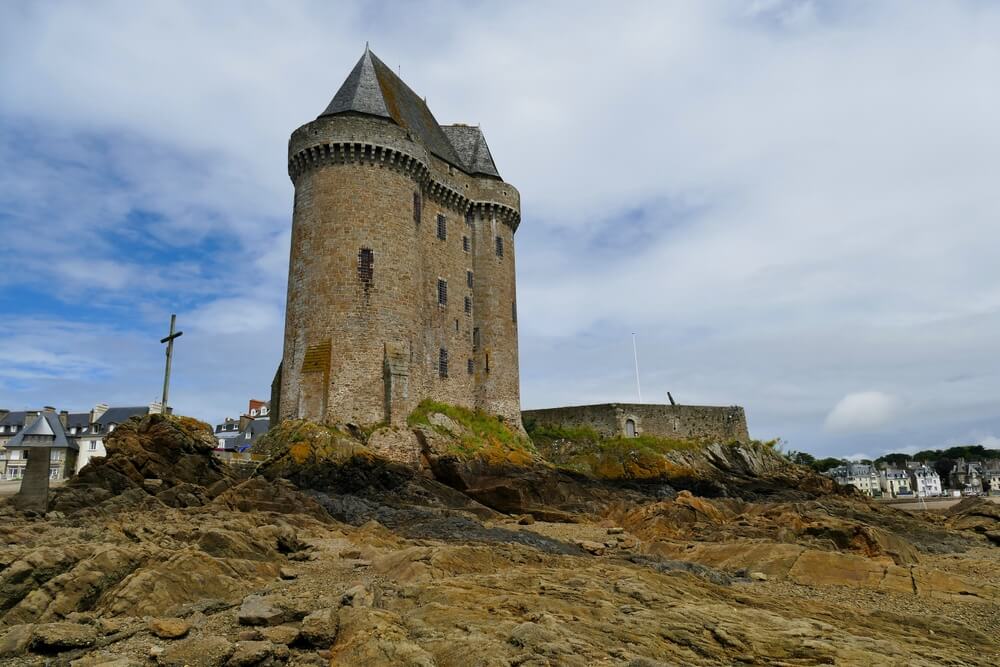The Tour Solidor, a symbolic landmark to visit in Saint-Malo

If you’re passing through the corsair town of Saint-Malo, don’t just stay within the city walls – visit the Tour Solidor. Located in the Saint Servan district on the outskirts of the Cité d’Alet, this tower dominates the mouth of the Rance on the seafront.
Designed in the medieval defensive style, the Tour Solidor features towers flanked by machicolations, a standing bridge resting on 2 arches and a drawbridge. Fans of medieval fortifications will love it!
And there’s no shortage of photo opportunities. A magnificent panorama of the Rance estuary and the Bay of Saint-Malo awaits you at the top of the tower as you walk around the parapet walk. A lovely view of the Saint Malo region and the surrounding area.
What was the Tour Solidor used for?
The Solidor Tower was built in the 14th century on the orders of Duke Jean IV of Brittany to keep control over the town of Saint-Malo and the entrances to the Rance. Perched on a rocky islet, its name translates from Breton as Porte de la Rivière (River Gate). It is therefore a place of surveillance.

What is the Tour Solidor made of?
When you visit the Tour Solidor, you will discover 3 storeys in the three round, slender towers. A combination of these three towers in fact makes up the tower surrounded by water, itself marked by the entrance châtelet, to which a courtyard has been added.
A high building was necessary to control access to Saint-Malo with a view over the Alet and the surrounding area. To get to the top of the tower, you have to climb the 104 steps, which are said to be easy.
The cross was erected at the foot of the tower in 1985 on the same rock where the French navigator and explorer Jacques Cartier cast off to discover Canada in 1534.
The different uses and activities of the Solidor Tower over the centuries…
Initially designed as a watchtower, it was later used as a prison during the Revolution, where priests, nuns and soldiers were imprisoned, and then as a warehouse under the Empire.
From the 1970s onwards, a new page was turned, and until recently it was used as a museum, the Long Cours – Cap Horniers museum, brimming with objects and ship’s instruments that had belonged to sailors and travellers, as well as marine navigation charts from the 19th and 20th centuries, models and ship’s instruments. Here you can discover the history of the sailors and crew members who sailed around the world via Cape Horn on their ocean voyages. All this has now come to an end, and these riches have been transferred to the Musée d’Histoire Maritime in Saint-Malo.
History of the Solidor Tower
- At the beginning of the fourth century, the Gallo-Romans had already used this rock to build a fort to protect the port of Alet. You can still see some of these Roman stones today, which form part of the foundations of the tower.
- The Tour d’Oreigle or Tour d’Aiquin, a fortified site built on the ruins of the Gallo-Roman fort, was destroyed by Malouin soldiers in the 13th century.
- In the 14th century, John IV of Brittany had the keep built on the ruins of the Tour d’Oreigle, in order to maintain control over the Rance and the town of Saint-Malo, whose inhabitants were rebellious and questioned his authority.
- The drawbridge was replaced by a stone bridge in 1756.
- The large roof that can be seen today is not original; it was modified in the 19th century by the architect Albert Ballu.
During the Gallo-Roman period, the sea was 8 metres lower, so if you find yourself near Tour Solidor at low tide, you may be lucky enough to catch a glimpse of the stone causeway that led to the Gallo-Roman port…
Practical information
- Adresse : 9 Cale Saint-Père, 35400 Saint-Malo
- Téléphone : 02.99.40.71.16 pas de site Internet
- Horaires d’ouverture : Ouvert de 10h à 12h30 et de 14h à 18h tous les jours d’avril à septembre (sauf le 1er mai) – D’octobre à mars, ouvert du mardi au dimanche de 10h à 12h et de 14h à 18h (sauf les jours fériés).
- Tarifs 2022 :
- Adulte : entrée 6 € + gratuité Musée d’Histoire de la Ville
- Enfant de 8 à 18 ans : entrée 3 €
- Tarif famille nombreuse (2 parents + 2 enfant et plus) : entrée 17 €
200 audioguided tours for cities all around the world
Download
